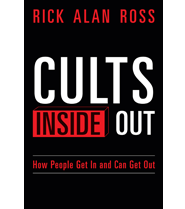How did conspiracy theories explode in popularity? It all boils down to narratives
Published By admin
The last three years have revealed a strange, fundamental truth about American society: we do not exist in a world where we all perceive the same reality. Rather, we exist in a universe of competing beliefs about the nature of the world. And for myriad reasons — including the fundamental way that the internet shapes our reality and provides alternative “facts” to every conceivable scenario — there is no shortage of sources that bolster these competing worldviews.
Hence, we’ve seen a rise, or at least acknowledgement, of “alternative beliefs” — ranging from election outcomes, folk cures for COVID, and even fantastical beliefs about Jewish space lasers. Some blame social media as the source of the rise of extremist beliefs. But, what if those with these views, and the divisions that stem from them, always existed? What if they would have likely existed even without being supercharged by social media?
As someone who researches conspiracy theories, I’m often asked why people believe in fantastical ideas. My response is that we need to look for the underlying social conditions that makes beliefs in these ideas not only plausible alternatives to individuals, but widely popular. As C. Wright Mills argued in “The Sociological Imagination,” when large sectors of a society each experience social problems, it indicates not a personal failure on anyone’s part; rather, it points to underlying problems in the makeup and structure of society.
Many social scientists and journalists are quick to paint a narrative which blames social media and other new communications technologies. There’s no doubt that new technologies have sped up the rate and reach of “alternative beliefs.” But just because an idea is available for public consumption doesn’t mean that people will necessarily adopt those ideas. There is something more happening here.
One of the ways conspiracy theorists and figures pushing falsifiable narratives are able to attract adherents to their belief system is by offering compelling narratives that tapped into the fears and desires of the public. QAnon was an example of this — it effectively folded many different facets of American life into one narrative that seemed absurd to outsiders.
Content retrieved from: https://www.salon.com/2023/05/21/narrative-sociology-conspiracy-theories-qanon/.






